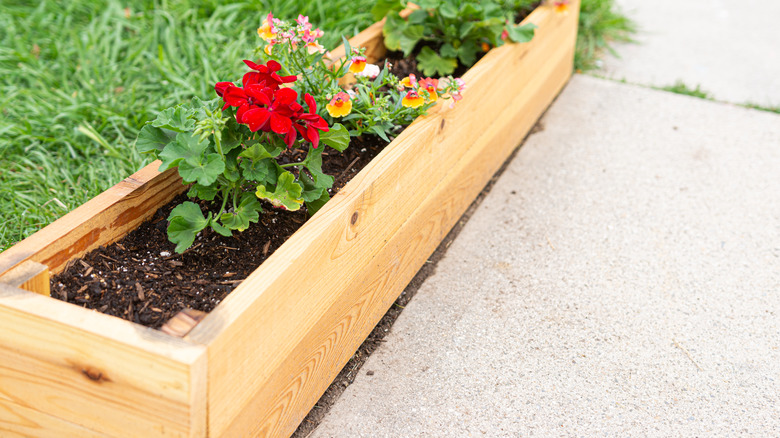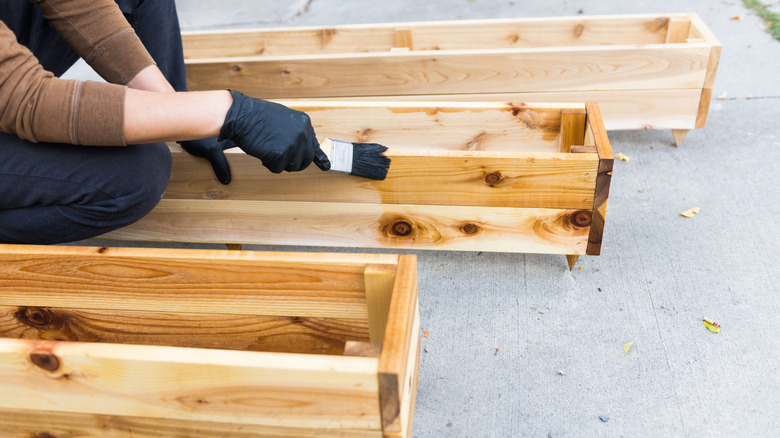Should You Treat A Cedar Planter Box Before Using It In The Garden?
We may receive a commission on purchases made from links.
If you've done any amount of gardening or DIY outdoor projects, you've probably heard that there are many reasons why you should be using cedar wood for your raised garden beds. Aside from it's durability, rich beauty, and relaxing fragrance, cedar wood is an ideal material for moist and wild-weathered environments. A popular choice for patio decking and outdoor furniture, cedar wood has natural properties that resist decay and mold growth and make it unappealing to pests. In general, you don't need to treat cedar planter boxes before placing them outside. However, if you don't pretreat your cedar planter box, you'll probably notice some visible changes in the wood. Exposed cedar will lose its pretty reddish coloring and eventually become rough and gray, which is fine if you appreciate a rustic garden aesthetic!
A solid cedar planter box should remain structurally sound for several years even if the exterior wood changes. However, because most planters tend to be exposed to a lot of soil, water, sunlight, and humidity, properly preparing and treating a planter box can help it last longer in the elements and maintain its aesthetic edge. Here's what you need to know about treating cedar planter boxes, the right finishes to use, and other ideas for raised garden bed designs that will preserve your planter's beauty and integrity.
Cedar is naturally rot-resistant, but treating is optional
If you're building a cedar planter box that will be used to grow vegetables or other edibles, your options for wood treatments will be limited. For example, boiled linseed oil is often mixed with synthetic solvents, making it inappropriate for organic gardens because it may leach these chemicals into the soil. Raw linseed oil can preserve your cedar wood and is ideal for organic edible garden beds, but may also run the risk of feeding mildew growth in damp environments. Although it is more expensive, pure tung oil may be the best safe treatment for cedar wood planters, and is easy to reapply as desired.
However, neither raw linseed oil nor pure tung oil will protect wood directly exposed to soil long-term. If you want to give your cedar planting boxes the best chance at longevity, you'll need to provide a barrier between the planter box and its contents. You can coat the inside of the planter with pine tar or use a plastic garden liner to keep the moist soil from touching the wood. If you're lining your raised garden bed with plastic, be sure to provide ample holes for drainage. If you won't be growing edible plants or herbs in the garden, consider a water-based spar urethane varnish, like Minwax, which is commonly used on exterior doors and outdoor furniture and is environmentally safe once dry. By applying spar urethane to the outside of the planter box, you can seal the cedar wood from water, protect it from sunlight, and prevent the natural color from fading so quickly.

